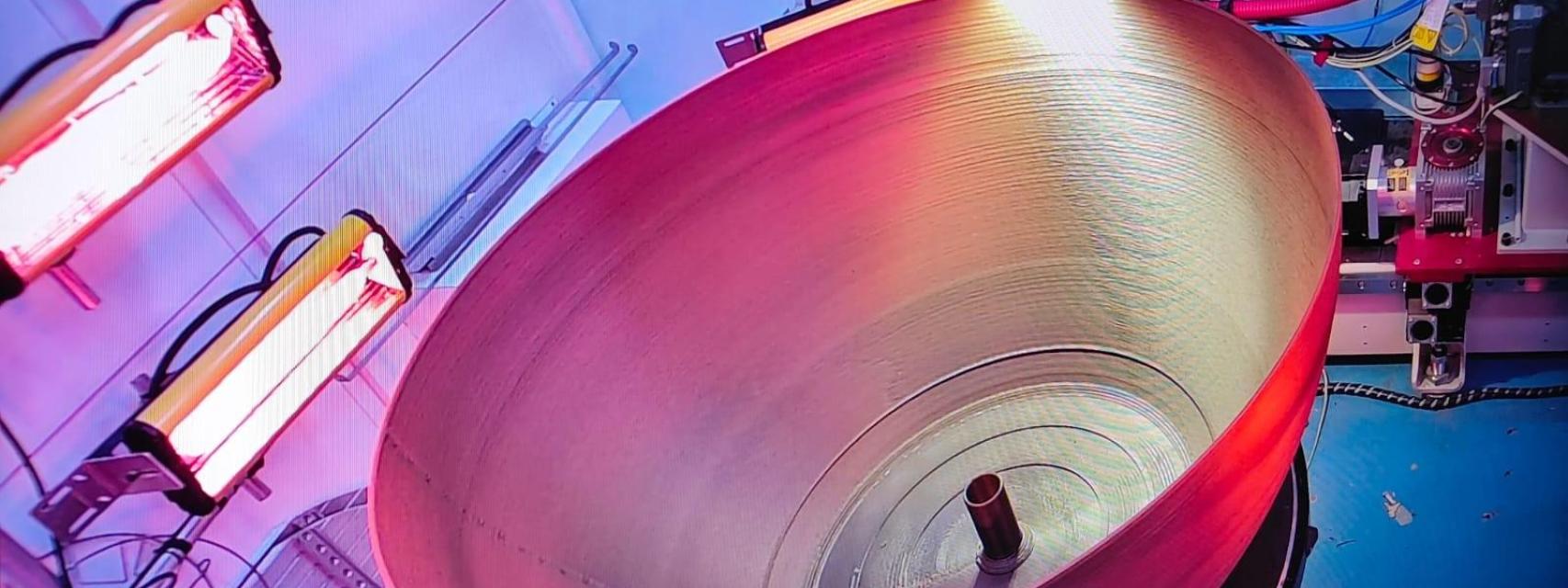Spain's First 3D-Printed Cryogenic Hydrogen Tank for Sustainable Aviation
Key Ideas
- AIMEN Technology Centre in Spain completes production of the country's first large-format 3D-printed cryogenic tank for aircraft hydrogen storage.
- The tank features a dual-wall architecture with an inner liner of biobased thermoplastic and an outer shell of carbon fiber composite, designed to withstand cryogenic temperatures below -250°C.
- This milestone marks a significant step towards zero-emission aviation, showcasing the potential of sustainable materials and additive manufacturing in the aerospace industry.
- The project is part of the EU-funded Overleaf program, aiming to revolutionize aviation by developing lightweight, sustainable structures for hydrogen-powered flight and decarbonization.
The AIMEN Technology Centre in O Porriño, Galicia, has achieved a significant milestone in sustainable aviation by producing Spain's first large-format 3D-printed cryogenic tank for aircraft hydrogen storage. This 1.5m diameter tank, part of the EU-funded Overleaf program led by ACITURRI, is a key component in the quest for zero-emission aviation through lightweight and sustainable structures. The tank's innovative dual-wall architecture, consisting of advanced biobased thermoplastic and carbon fiber composite, demonstrates exceptional engineering to endure extreme cryogenic temperatures. The manufacturing process, carried out in a specialized robotic 3D-printing cell, involved infrared-assisted heating for precision over a continuous 100-hour build period, monitored with thermal-camera technology. AIMEN's collaboration with French research center CANOE has furthered the development of sustainable thermoplastics reinforced with natural fibers for this application, showcasing a technological breakthrough that will influence the manufacturing of aviation components. The Overleaf project, coordinated by ACITURRI, aligns with the European Union's objectives of reducing environmental impact by introducing lighter, bio-based composites and improving production efficiency through digital design and robotic automation. This achievement by AIMEN underscores the organization's leadership in merging advanced manufacturing, robotics, and sustainable materials to propel hydrogen-powered flight and decarbonize the aviation sector. The emergence of projects like this highlights the trend of additive manufacturing in advancing hydrogen adoption in aerospace and energy sectors, enabling the creation of optimized, lightweight components crucial for hydrogen propulsion systems. The collaboration between various companies, such as Conflux Technology, Siemens Energy, Shell, and GE Additive, signifies the increasing role of additive manufacturing in facilitating zero-emission aviation and scalable hydrogen infrastructure.
Topics
Aviation
Green Energy
EU Funding
Sustainable Aviation
Additive Manufacturing
3D Printing
Aerospace Innovation
Advanced Manufacturing
Hydrogen Propulsion
Latest News
